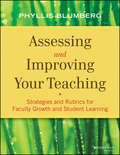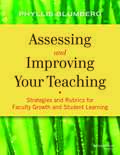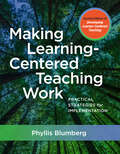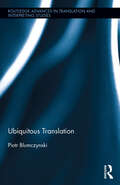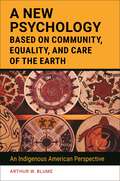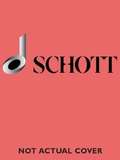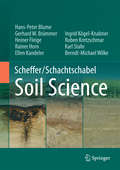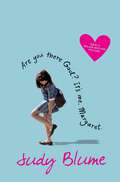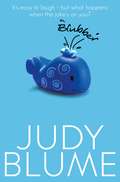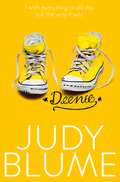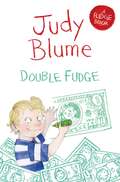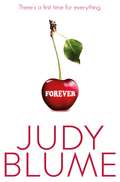- Table View
- List View
Assessing and Improving Your Teaching: Strategies and Rubrics for Faculty Growth and Student Learning
by Phyllis BlumbergIn order to make appropriate changes to improve your teaching and your students’ learning, first you need to know how you’re teaching now. Figure it out for yourself and invigorate your teaching on your own terms! This practical evidence-based guide promotes excellence in teaching and improved student learning through self-reflection and self-assessment of one’s teaching. Phyllis Blumberg starts by reviewing the current approaches to instructor evaluation and describes their inadequacies. She then presents a new model of assessing teaching that builds upon a broader base of evidence and sources of support. This new model leads to self-assessment rubrics, which are available for download, and the book will guide you in how to use them. The book includes case studies of completed critical reflection rubrics from a variety of disciplines, including the performing and visual arts and the hard sciences, to show how they can be used in different ways and how to explore the richness of the data you’ll uncover.
Assessing and Improving Your Teaching: Strategies and Rubrics for Faculty Growth and Student Learning
by Phyllis BlumbergIn order to make appropriate changes to improve your teaching and your students’ learning, first you need to know how you’re teaching now. Figure it out for yourself and invigorate your teaching on your own terms! This practical evidence-based guide promotes excellence in teaching and improved student learning through self-reflection and self-assessment of one’s teaching. Phyllis Blumberg starts by reviewing the current approaches to instructor evaluation and describes their inadequacies. She then presents a new model of assessing teaching that builds upon a broader base of evidence and sources of support. This new model leads to self-assessment rubrics, which are available for download, and the book will guide you in how to use them. The book includes case studies of completed critical reflection rubrics from a variety of disciplines, including the performing and visual arts and the hard sciences, to show how they can be used in different ways and how to explore the richness of the data you’ll uncover.
Making Learning-Centered Teaching Work: Practical Strategies for Implementation
by Phyllis BlumbergThis is a substantially expanded and enhanced revision of Phyllis Blumberg’s acclaimed and bestselling book, Developing Learner-Centered Teaching: A Practical Guide for Faculty (Jossey-Bass, 2009).This easy to follow how-to-guide provides faculty with both a thorough introduction to this evidence-based approach to teaching and practical guidance on how to progressively implement it to strengthen the impact of their teaching. It demonstrates how they can integrate learning-centered teaching into their classroom practice without sacrificing content and rigor, and how to positively engage students in the process by demonstrating its impact on their mastery and recall of key concepts and knowledge.An added outcome, given that learning-centered teaching is correlated with improved student learning, is the resulting assessment data that it provides faculty with the measures to meet the increased demands by accreditors, legislators and society for evidence of improved teaching and learning outcomes. Phyllis Blumberg demonstrates how to use rubrics to not only satisfy outside requirements and accreditation self-studies but, more importantly, for faculty to use for the purposes of self-improvement or their teaching portfolios. She provides examples of how the rubrics can be used to ascertain whether college-wide strategic plans for teaching excellence are being met, for program review, and to determine the effectiveness of faculty development efforts. The book includes the following features: ·Boxes with easy-to-implement and adaptable examples, covering applications across disciplines and course types ·Worksheets that foster easy implementation of concepts ·Rubrics for self- assessment and peer assessment of learning-centered teaching ·Detailed directions on how to use the rubrics as a teaching assessment tool for individuals, courses, and programs ·List of examples of use classified by discipline and type of course Phyllis Blumberg offers Making Learning Centered Teaching Course Design Institutes and workshops on this and other teaching and assessment topics. Half day to multiple day modules.For more information or questions contact blumbergphyllis@gmail.com, or IntegrateEd.com
Making Learning-Centered Teaching Work: Practical Strategies for Implementation
by Phyllis BlumbergThis is a substantially expanded and enhanced revision of Phyllis Blumberg’s acclaimed and bestselling book, Developing Learner-Centered Teaching: A Practical Guide for Faculty (Jossey-Bass, 2009).This easy to follow how-to-guide provides faculty with both a thorough introduction to this evidence-based approach to teaching and practical guidance on how to progressively implement it to strengthen the impact of their teaching. It demonstrates how they can integrate learning-centered teaching into their classroom practice without sacrificing content and rigor, and how to positively engage students in the process by demonstrating its impact on their mastery and recall of key concepts and knowledge.An added outcome, given that learning-centered teaching is correlated with improved student learning, is the resulting assessment data that it provides faculty with the measures to meet the increased demands by accreditors, legislators and society for evidence of improved teaching and learning outcomes. Phyllis Blumberg demonstrates how to use rubrics to not only satisfy outside requirements and accreditation self-studies but, more importantly, for faculty to use for the purposes of self-improvement or their teaching portfolios. She provides examples of how the rubrics can be used to ascertain whether college-wide strategic plans for teaching excellence are being met, for program review, and to determine the effectiveness of faculty development efforts. The book includes the following features: ·Boxes with easy-to-implement and adaptable examples, covering applications across disciplines and course types ·Worksheets that foster easy implementation of concepts ·Rubrics for self- assessment and peer assessment of learning-centered teaching ·Detailed directions on how to use the rubrics as a teaching assessment tool for individuals, courses, and programs ·List of examples of use classified by discipline and type of course Phyllis Blumberg offers Making Learning Centered Teaching Course Design Institutes and workshops on this and other teaching and assessment topics. Half day to multiple day modules.For more information or questions contact blumbergphyllis@gmail.com, or IntegrateEd.com
Immune Mechanisms in Inflammatory Bowel Disease (Advances in Experimental Medicine and Biology #579)
by Richard Blumberg Markus F. NeurathImmune Mechanisms in Inflammatory Bowel Disease is a highly, concise update of the most recent advances in the immunobiology, genetics and microbiology related to Inflammatory Bowel Disease. This book broadly treats the topics that lead to understanding of the pathogenesis of this disease in an organized, systematic approach.
Principles of Mucosal Immunology
by Richard S. Blumberg Thomas T. MacDonald Society for Society for Mucosal Immunology Phillip D. SmithThis respected graduate-level textbook provides comprehensive and accessible coverage of the basic and clinical aspects of the mucosal immune system, addressing the major components of the mucosal barrier ̶ gastrointestinal, upper and lower respiratory, ocular, and genitourinary mucosal immune systems ̶ in a highly user-friendly style. The editors of and contributors to the book, all internationally-recognized leaders, present the current principles, concepts, and basic processes involved in mucosal immunology, mucosal diseases, and host defense at mucosal surfaces. Topics discussed include the development and structure of the mucosal immune system and its cellular constituents, host-microbe relationships, infection, mucosal diseases, and vaccines. The second edition has been carefully updated throughout to reflect the latest developments from clinical research and key literature has been fully updated.
Experiencing Translationality: Material and Metaphorical Journeys
by Piotr BlumczynskiThis innovative book takes the concept of translation beyond its traditional boundaries, adding to the growing body of literature which challenges the idea of translation as a primarily linguistic transfer. To gain a fresh perspective on the work of translation in the complex processes of meaning-making across physical, social and cultural domains (conceptualized as translationality), Piotr Blumczynski revisits one of the earliest and most fundamental senses of translation: corporeal transfer. His study of translated religious officials and translated relics reframes our understanding of translation as a process creating a sense of connection with another time, place, object or person. He argues that a promise of translationality animates a broad spectrum of cultural, artistic and commercial endeavours: it is invoked, for example, in museum exhibitions, art galleries, celebrity endorsements, and the manufacturing of musical instruments. Translationality offers a way to reimagine the dynamic entanglements of matter and meaning, space and time, past and present. This book will be of interest to students and scholars in translation studies as well as related disciplines such as the history of religion, anthropology of art, and material culture.
Experiencing Translationality: Material and Metaphorical Journeys
by Piotr BlumczynskiThis innovative book takes the concept of translation beyond its traditional boundaries, adding to the growing body of literature which challenges the idea of translation as a primarily linguistic transfer. To gain a fresh perspective on the work of translation in the complex processes of meaning-making across physical, social and cultural domains (conceptualized as translationality), Piotr Blumczynski revisits one of the earliest and most fundamental senses of translation: corporeal transfer. His study of translated religious officials and translated relics reframes our understanding of translation as a process creating a sense of connection with another time, place, object or person. He argues that a promise of translationality animates a broad spectrum of cultural, artistic and commercial endeavours: it is invoked, for example, in museum exhibitions, art galleries, celebrity endorsements, and the manufacturing of musical instruments. Translationality offers a way to reimagine the dynamic entanglements of matter and meaning, space and time, past and present. This book will be of interest to students and scholars in translation studies as well as related disciplines such as the history of religion, anthropology of art, and material culture.
Ubiquitous Translation (Routledge Advances in Translation and Interpreting Studies)
by Piotr BlumczynskiIn this book, Piotr Blumczynski explores the central role of translation as a key epistemological concept as well as a hermeneutic, ethical, linguistic and interpersonal practice. His argument is three-fold: (1) that translation provides a basis for genuine, exciting, serious, innovative and meaningful exchange between various areas of the humanities through both a concept (the WHAT) and a method (the HOW); (2) that, in doing so, it questions and challenges many of the traditional boundaries and offers a transdisciplinary epistemological paradigm, leading to a new understanding of quality, and thus also meaning, truth, and knowledge; and (3) that translational phenomena are studied by a broad range of disciplines in the humanities (including philosophy, theology, linguistics, and anthropology) using various, often seemingly unrelated concepts which nevertheless display a considerable degree of qualitative proximity. The common thread running through all these convictions and binding them together is the insistence that translational phenomena are ubiquitous. Because of its unconventional and innovative approach, this book will be of interest to translation studies scholars looking to situate their research within a broader transdisciplinary model, as well as to students of translation programs and practicing translators who seek a fuller understanding of why and how translation matters.
Ubiquitous Translation (Routledge Advances in Translation and Interpreting Studies)
by Piotr BlumczynskiIn this book, Piotr Blumczynski explores the central role of translation as a key epistemological concept as well as a hermeneutic, ethical, linguistic and interpersonal practice. His argument is three-fold: (1) that translation provides a basis for genuine, exciting, serious, innovative and meaningful exchange between various areas of the humanities through both a concept (the WHAT) and a method (the HOW); (2) that, in doing so, it questions and challenges many of the traditional boundaries and offers a transdisciplinary epistemological paradigm, leading to a new understanding of quality, and thus also meaning, truth, and knowledge; and (3) that translational phenomena are studied by a broad range of disciplines in the humanities (including philosophy, theology, linguistics, and anthropology) using various, often seemingly unrelated concepts which nevertheless display a considerable degree of qualitative proximity. The common thread running through all these convictions and binding them together is the insistence that translational phenomena are ubiquitous. Because of its unconventional and innovative approach, this book will be of interest to translation studies scholars looking to situate their research within a broader transdisciplinary model, as well as to students of translation programs and practicing translators who seek a fuller understanding of why and how translation matters.
Colonialism and the COVID-19 Pandemic: Perspectives from indigenous Psychology (International and Cultural Psychology)
by Arthur W. BlumeThis book views responses to the Covid 19 virus through the lens of indigenous thinking which sheds light on some of the failures in dealing with the pandemic. Colonial societies maintain beliefs that hierarchies are part of the natural order, and that certain people are entitled to privileges that others are not. These hierarchies have contributed to racism as well as health, and wealth disparities that have increased vulnerabilities to the virus. Indigenous societies, on the other hand, view individuals as interdependent, and hold an optimistic view that this tragedy can yield important lessons for future improvement. This book examines the legacy of colonial societies in contributing to existing vulnerabilities, and incorporates an indigenous perspective in re-imagining the problem and its solutions.
A New Psychology Based on Community, Equality, and Care of the Earth: An Indigenous American Perspective (Race and Ethnicity in Psychology)
by Arthur W. BlumeExplains Native American psychology and how its unique perspectives on mind and behavior can bring a focus to better heal individual, social, and global disorders.Psychology is a relatively new discipline, with foundations formed narrowly and near-exclusively by white, European males. But in this increasingly diverse nation and world, those foundations filled with implicit bias are too narrow to best help our people and society, says author Arthur Blume, a fellow of the American Psychological Association. According to Blume, a narrowly based perspective prevents "out-of-the-box" thinking, research, and treatment that could well power greater healing and avoidance of disorders.In this text, Blume explains the Native American perspective on psychology, detailing why that needs to be incorporated as a new model for this field. A Native American psychologist, he contrasts the original culture of psychology's creators—as it includes individualism, autonomy, independence, and hierarchal relationships—with that of Native Americans in the context of communalism, interdependence, earth-centeredness, and egalitarianism. As Blume explains, psychological happiness is redefined by the reality of our interdependence rather than materialism and individualism, and how we do things becomes as important as what we accomplish.
A New Psychology Based on Community, Equality, and Care of the Earth: An Indigenous American Perspective (Race and Ethnicity in Psychology)
by Arthur W. BlumeExplains Native American psychology and how its unique perspectives on mind and behavior can bring a focus to better heal individual, social, and global disorders.Psychology is a relatively new discipline, with foundations formed narrowly and near-exclusively by white, European males. But in this increasingly diverse nation and world, those foundations filled with implicit bias are too narrow to best help our people and society, says author Arthur Blume, a fellow of the American Psychological Association. According to Blume, a narrowly based perspective prevents "out-of-the-box" thinking, research, and treatment that could well power greater healing and avoidance of disorders.In this text, Blume explains the Native American perspective on psychology, detailing why that needs to be incorporated as a new model for this field. A Native American psychologist, he contrasts the original culture of psychology's creators—as it includes individualism, autonomy, independence, and hierarchal relationships—with that of Native Americans in the context of communalism, interdependence, earth-centeredness, and egalitarianism. As Blume explains, psychological happiness is redefined by the reality of our interdependence rather than materialism and individualism, and how we do things becomes as important as what we accomplish.
Social Issues in Living Color [3 volumes]: Challenges and Solutions from the Perspective of Ethnic Minority Psychology [3 volumes]
by Arthur W. BlumeOffering fresh and exciting approaches to solving global problems, this book creatively views challenging social issues through the lens of racial and ethnic psychology.As the demographic makeup of the American population continues to evolve, understanding and addressing the psychological needs of ethnic minorities in the United States becomes more important to the overall health and well-being of society. This three-volume set is the first publication to explicitly tackle social issues from the perspective of racial and ethnic psychology. It uniquely presents racial and ethnic psychological perspectives on topics such as media, criminal justice, racism, climate change, gender bias, and health and mental health disparities.Volume one introduces readers to the basic scientific concepts of racial and ethnic minority psychology and then examines the intersectionality of race, ethnicity, gender, and sexual orientation. It also addresses how race and ethnicity affect communication styles, leadership styles, and media. The second volume discusses the experiences of individuals within racial and ethnic minorities, including overt racism, covert racism, and colonialism, and addresses how ethnic minority psychology plays a role in our educational system, poverty, global climate change, and sustainability. The third volume covers ethics in health and research, considers the causes of health and mental health disparities, and identifies diversity initiatives that can improve the health and well-being of all citizens, not just racial and ethnic minority citizens.
Treating Drug Problems (Wiley Treating Addictions series #1)
by Arthur W. BlumePart of the new Treating Addictions series, Treating Drug Problems is full of practical information on assessing, diagnosing, and treating drug problems, and represents an invaluable tool for anyone who works with clients experiencing drug dependence or addiction. The popular series format includes assessment scales; tables, checklists, and diagrams; features such as "Dos and Don'ts" and "Important Things to Remember"; problem-solving scenarios; "Self-Improvement Techniques"; and suggested resources, including an annotated bibliography and lists of contacts such as self-help groups, residential and outpatient treatment programs, support groups, and websites.
The Psychology of Inequity: Global Issues and Perspectives (Race and Ethnicity in Psychology)
by Arthur W. Blume Jean Lau Chin Yolanda E. GarciaThis book presents cutting edge conceptualizations of the psychological challenges of inequity and engages the audience in examining the global nature of inequity and how it psychologically impacts human beings across both space and time.The Psychology of Inequity: Global Issues and Perspectives examines the psychological consequences of inequity beyond the borders of the United States and other western nations. Inequity does not end at national borders; it is a global problem that reflects the interdependent nature of our planetary existence. This book advances our understanding of psychological inequity as a global problem requiring global solutions.The volume approaches its topic from many angles, moving from a discussion of the psychological concerns of specific groups—from targets of racism and sexism to the plights of migrants, refugees, and immigrants—to large scale global inequities and their psychological consequences, such as educational inequities and climate change. An excellent introduction to decolonized psychology on an international scale, this book will benefit anyone interested in learning more about promoting global equity in psychologically healthy and culturally appropriate ways.
PasRo: Pascal and C for Robots
by Christian Blume Wifried Jakob John FavaroThe second edition of PASRO - Pascal for Robots includes some new aspects of the PASRO development within the last two years. Besides the PASRO implementation on other computers with the help of different Pascal compilers and operating systems, one significant new development has been the implementation of the PASRO concept in the programming language C. Therefore the second edition is divided into two major parts: A. The revised and little extended "old" PASRO description of the first edition based on Pascal. B. The new PASRO/C description based on C. Of course we know that the name "PASRO/C· is a contradiction in terms, but we chose it, in order to use the well known name PASRO in future. The additional author John Favaro is respon sible for the PASRO/C implementation and the des~ription while Christian Blume designed the PASRO concept and implemented the original PASRO, together with Wilfried Jakob. Additional thanks are dedicated to Jan Schloen and Thomas Eppting, who helped us to implement PASRO/C. We would also like to thank all readers of the first edition, who sent us their comments and corrections. Amongst these, spe cial thanks to G. Macartney from the Queen's University of Bel fast.
PasRo: Pascal for Robots
by Christian Blume Wilfried JakobThe origin ofPASRO (Trademark ofBIOMATIK GmbH, Freiburg, FRG) was a set of pro cedures for performing arithmetic on geometric data types and for coordinate transforma tion for study and teaching purposes, developed as a base for high level robot programming. The study of many robot languages revealed areas for necessary improvements: 1. Move statements must be independent of a specific robot control system. They must instead be based on the different types of trajectory calculation resp. interpolation. 2. A structured language concept should be employed, including a structured concept for concurrent programming (The latter is not yet implemented in PASRO owing to the use of Standard PASCAL instead of CONCURRENT PASCAL or MODULA 2). 3. Integration of geometric data types into existing structured data types. 4. Simplicity of language constructs. 5. Integration of teach-in via frame-files. This resulted in the implementation ofPASRO by Christian Blume (BLUME [1.1]) and in the joint development of the SRL concept (Structured Robot Language) as it was intro duced in May 1983 at Liege (see BLUMEIJAKOB [1.2]). PASRO is at present state of the implementation a programming system for teaching, studying and experimenting and not for industrial use, although it could easily be extended for that purpose (cf paragraph 8.2). We especially thank the PSI company, Berlin, who gave us technical support to write this book, the BIOMATIK company ofFreiburg, which is marketing PASRO, its manager G. R. Koch, and the University of Karlsruhe, Prof. Dr.-Ing. U. Rembold.
Scheffer/Schachtschabel Soil Science
by Hans-Peter Blume Gerhard W. Brümmer Heiner Fleige Rainer Horn Ellen Kandeler Ingrid Kögel-Knabner Ruben Kretzschmar Karl Stahr B.-Michael WilkeThe soils are fundamental to our existence, delivering water and nutrients to plants, that feed us. But they are in many ways in danger and their conservation is therefore a most important focus for science, governments and society as a whole. A team of world recognised researchers have prepared this first English edition based on the 16th European edition. • The precursors and the processes of soil development • The physical, biological and chemical properties of soils • Nutrients and Pollutants • The various soil classifications with the main focus on the World Reference Base for Soil Resources (WRB) • The most important soils and soil landscapes of the world • Soil Evaluation Techniques • Basic Principles of Soil Conservation Whoever works with soils needs this book.
Are You There, God? It's Me, Margaret (Lrs Large Print Cornerstone Ser.)
by Judy BlumeLife isn't easy for Margaret. She's moved away from her childhood home, she's starting a new school, finding new friends - and she's convinced she's not normal. For a start she hasn't got a clue whether she wants to be Jewish like her father or Christian like her mother. Everyone else seems really sure of who they are. And, worst of all, she's a 'late developer'. She just knows that all her friends are going to need a bra before she does. It's too embarrassing to talk to her parents about these things. So she talks to God instead - and waits for an answer . . .Are You There, God? It's Me, Margaret? is a teen classic and loved around the world. Judy Blume has written some of the best books of our time about real-life issues - family stress and pressures, what happens when your parents divorce, the problems of growing up and sexual awakening, bereavement - with insight, sensitivity and honesty. The response of readers all around the world continues to make her one of the best-loved writers ever published.
Blubber (Soundways To Reading Ser.)
by Judy BlumeBlubber is a thick layer of fat that lies under the skin and over the muscles of whales . . .When Linda innocently reads out her class project, everyone finds it funny. Linda can't help it if she's fat, but what starts as a joke leads to a sustained and cruel ritual of humiliation. Jill knows she should defend Linda, but at first she's too scared. When she eventually stands up to the bullies, she becomes their next victim - and what's worse, Linda is now on their side . . .In Blubber, Judy Blume sensitively explores bullying and true friendship.
Deenie (Piccolo Bks.)
by Judy Blume'I hate it when my mother brags about me and my sister. "Deenie's the beauty and Helen's the brain."' Mrs Fenner has very fixed ambitions for her daughters. Deenie is thirteen years old and gorgeous. Her mother wants her to be a model - but Deenie's not so sure. So when she's diagnosed with scoliosis - curvature of the spine - Deenie's almost relieved. No more traipsing round modelling agencies, no more living up to her mother's expectations. But she has to wear an ugly, uncomfortable back brace for the next four years. And she's convinced that it will put an end to normal teenage life - including her blossoming relationship with Buddy Brader . . .Deenie is bestselling author Judy Blume's classic novel about the pressures of looking perfect.
Double Fudge (Fudge #5)
by Judy Blume'Ooh, money, money, money,' sang Fudge. 'I love money, money, money!' Pete's little brother, Fudge, has a new obsession. He's mad about money and he wants loads of it. In fact, he's going to print a hundred million trillion 'Fudge Bucks' and buy the whole world. Or maybe he'll just settle for buying the capital city of America and call it Fudgington. He's driving Pete nuts. Will Fudge ever stop being the most embarrassing brother on the planet?Double Fudge is the final book in this hugely successful series from the bestselling author and household name Judy Blume.
Forever: Are You There God? It's Me, Margaret; Deenie; Forever; Then Again, Maybe I Won't; Tiger Eyes (Piccolo Bks.)
by Judy BlumeDo you remember the first time?Forever is still the bravest, freshest, fruitiest and most honest account of first love, first sex and first heartbreak ever written for teens. It was a book ahead of its time – and remains, after forty years in print, a teenage bestseller from the award-winning Judy Blume.With a gorgeous cover, Forever is a teen classic ripe for a new generation of readers.
